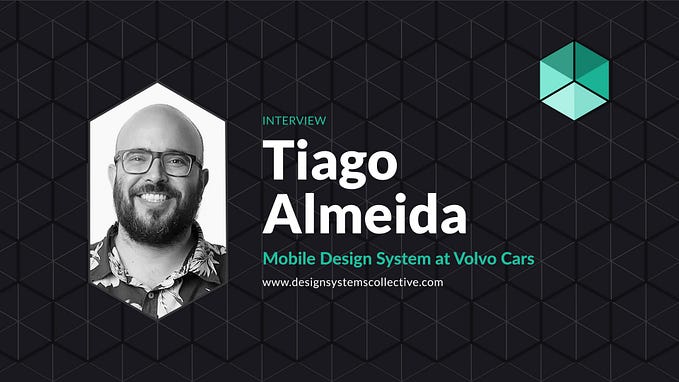How designing for inclusion can help develop better products for all
In this article I will talk about the implications of disability for design and I will discuss how inclusive design ultimately can lead to better products for all.
Visual culture and exclusion
Visual perception plays a big role in our everyday life and is the dominant type of information in our society. It helps us understand the environment, interact with others, learn new things; Much of human knowledge is best communicated visually via texts, graphs, maps, and icons.
However, in our visual culture groups of people that cannot rely on visual senses are unintentionally excluded from using many products or environments that rely on visual information. This type of exclusion may even feel like social rejection and resembles physical pain in the brain.
Born in Himalayas in India, Thomas Tajo became blind at age of 8 or 9. While studying Sociology at the School of Economics at the University of Delhi in 2012 he started questioning his blindness and he came to realize that blindness and the incapacity associated with it is a lack of awareness of the capacities of our non-visual senses.
“The idea in the visual culture is to give blind people vision. This ignores the whole other human bodily sensory capacity.” says Thomas. Telling blind people what vision is like by translating visual info into other types of information is like an inappropriate attempt to fix someone’s disability, missing out on the opportunity to harness the capacities of other senses.
Adaptive inclusion vs. inclusive design
Tomas is now an independent research, blindness consultant, disability advocate and echo location and perceptual navigation instructor for Visioneers. As an echo location and perceptual navigation instructor he teaches a method that changes how blind people navigate using full length cane in combination with echo-location. The full length cane is different from the traditional cane as it is longer, lighter, not the same length for everyone and it is held on the side instead of on the front. Echo-location uses sounds and their echo signals to collect information about the environment and the dimension, materials and distance of objects. Thomas uses echo-location to recognize objects such as bikes, shoes and music instruments, have a look at this video.
Adaptive inclusion
Echo-location is one way of developing bodily abilities to extend cognition. Thomas calls this “adaptive inclusion”.
Other ways to extend bodily abilities are assistive tools or technologies such as hearing devices for deaf people, glasses for less sighted people or way finding wearable device that translate sonar into haptic vibrations for blind people. These assistive technologies are often designed as fixed solutions for disabled people and associated with disability and dependence. For example the white cane is a symbol of blindness and inability and it stigmatizes disability as a negative identity. Many blind people don’t want to use it, because it is a symbol of blindness as a disability.
Inclusive design
Besides specialized products for people with disability we need products that work for “people” some of them having less ability than others. Inclusive design is a design approach that aims at integral design for all, also people with permanent, temporarily or situational limitations. Inclusive design aims to design products that are useful for all people.
The first step towards inclusive design is to start building better methods and tools for recognizing exclusion writes Kat Homes in her book Mismatch: “Designing for inclusion begins with recognizing exclusion.” We can learn the most from people that experienced great degrees of exclusion.
Second, we should focus on people that are excluded by products as a way to identify better design constraints. Specific types of exclusion help to go deep into how to creating better solutions. We start with observing, asking questions and listening to learn from human diversity.
Finally, we solve for one, extend to many. We have to create a baseline of how well the solution works for excluded communities, such as people with disabilities. Build a solution for these people and extend those solutions to people who face similar experiences on a temporary and situational basis.

Disability as a driver for developing better products
Besides being inclusive and reaching more people inclusive design approach has a number of other benefits. Inclusive design can be a source of innovation and growth:
Designing for a diverse group of people in mind will improve products not only for people with disabilities, but adding extra layers of information also adds something for others as well. Many assistive solutions that were made for people with disability eventually started being used by a mainstream audience such as subtitles, the typewriter or voice over technology.
Subtitles were developed to make television content accessible for deaf people. Today not only deaf people benefit from subtitles, but many more: people watch videos with subtitles on social media in situations where they can’t turn on the volume, and in noisy situation.
One of the first typewriters was invented early 19th century for a countess that was slowly losing her vision. She was friends with an Italian inventor Turri and to keep communication private, he invented a typewriter for her. First developed for blind people, the typewriter and the computer keyboard are now used by many people.
Developed for blind people, voice over technology allows any user, a low vision user or a user with no vision at all to use an iPad or iPhone. But voice over technology also adds something for sighted people in situations where they have to watch what they are doing: It allows them to listen to directions while driving a car or listen to a recipe while cooking.
Finally, inclusive design ultimately can lead to creating better products for all. Strong constraints can force designers and engineers to be more creative. It can help expand the customer base by translating to a broader market and finding a way to make solutions relevant to a general audience.
Conclusion
In this article I compared exclusion and inclusion in product design through the example of blindness. However, inclusive design is not only about designing with disabilities in mind but it is also about gender, education, etc.
The objects around us influence our ability to participate in society. The people who design those products determine who can and cannot participate and they can include a more diverse range of people. Our challenge is to use design as a tool for delivering expectations of inclusivity for a collective future.
This article is based on “Interactive Workshop on Blindness, Echo-location, and Design” that was a part of Research Day 2018, Social Sciences, KU Leuven, December 7, 2018 and was co-organised by Patrick Devlieger, Roos Voorend, Thomas Tajo and Bert Vandenberghe.







